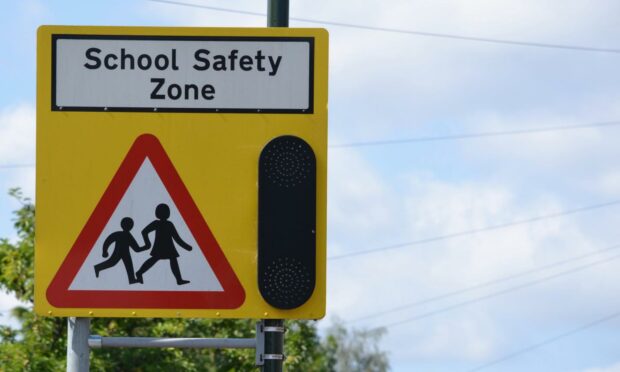Temporary traffic bans are to be tested around three Fife schools and could lead to vehicle exclusion zones around more.
The School Streets initiative is to be introduced for a trial period at Denend Primary School, in Cardenden, following fears among parents that a child will be hurt.
Two other schools are to be chosen for the pilot which, if successful, could see traffic bans around drop-off and pick-up times at more kingdom primary schools.
School Streets have already been introduced by other local authorities, including Angus, Dundee and Perth and Kinross.
Fife Council’s policy and coordination committee agreed to try it out at Denend during 2022/23 and have asked officers to identify two other suitable schools.
How do School Streets work?
In School Streets zones non-residential traffic is banned from roads outside and around school entrances as children arrive and leave.
Residents, emergency services and blue badge holders are exempt from the ban, with residents issued permits.
Electronic signs are activated during closure periods.
What are the benefits?
The number of accidents outside schools where someone has been hurt is low, according to the council, so any school traffic ban in Fife is not expected to impact on road casualty statistics.
However, it is expected people will feel safer, traffic congestion outside schools will be less and more children will walk to and from school at least for the final part of their journey.
Why Denend Primary School?
Parents say children have been pulled from the paths of cars and there have been bumps outside the school, which sits at the end of a narrow cul-de-sac.
A petition by the school’s parent council calling for an exclusion zone outside the school was backed by councillors last month.
Where else?
If the scheme is rolled out, Fife Council said School Streets will be introduced at only ‘probably quite small’ proportion of schools.
Officers will consider the suitability of other schools, which will include congestion levels, alternative safe drop-off areas, presence of through traffic and support from the school, parents and residents.
How have School Streets fared elsewhere?
The City of Edinburgh Council evaluated its School Streets five years ago and found significant reductions in traffic on restricted streets, general acceptance by residents and parents and a small increase in the number of pupils walking to school.
The reduction in traffic in restricted streets was greater than the increase in traffic in surrounding streets, it said.
A survey found two-thirds of parents and residents said School Streets zones felt safer, although no evidence of a reduction in road casualties was recorded.
Non-compliance among motorists, particularly where streets were used by through traffic, was an issue.
